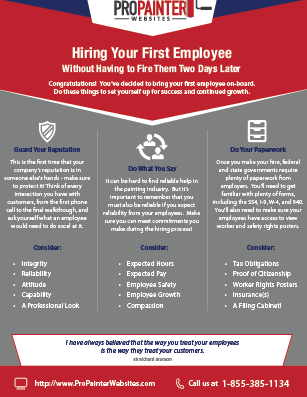Understand Just How Seasonal Conditions Impact The Success Of Industrial Exterior Paint And Discover The Optimal Periods To Ensure Long-Lasting Results For Your Project
Understand Just How Seasonal Conditions Impact The Success Of Industrial Exterior Paint And Discover The Optimal Periods To Ensure Long-Lasting Results For Your Project
Blog Article
Team Author-Ford Skafte
When you're planning a business outside painting project, seasonal factors can make or break your outcomes. You'll want to take into consideration just how temperature level and humidity impact paint application and drying times. Picking the right period can ensure your paint adheres correctly and lasts much longer. But which periods are genuinely the best for this kind of work? Allow's check out the key elements that can impact your job's success.
The Effect of Temperature on Paint Application
When you're preparing a commercial outside paint job, the temperature can substantially affect exactly how well the paint adheres and dries out.
Ideally, you wish to paint when temperatures vary in between 50 ° F and 85 ° F. If it's as well cold, the paint may not heal properly, leading to issues like peeling off or breaking.
On the other hand, if it's also hot, the paint can dry too promptly, preventing appropriate bond and leading to an uneven surface.
painter in fort worth need to also consider the time of day; morning or late afternoon offers cooler temperature levels, which can be extra positive.
Always examine the producer's suggestions for the details paint you're using, as they usually give guidance on the optimal temperature variety for ideal outcomes.
Moisture and Its Result on Drying Times
Temperature isn't the only ecological factor that influences your commercial outside paint task; humidity plays a considerable role too. High humidity degrees can reduce drying times considerably, impacting the general top quality of your paint job.
When the air is saturated with dampness, the paint takes longer to heal, which can result in issues like inadequate attachment and a greater risk of mold growth. If you're repainting on a particularly damp day, be planned for extended delay times in between coats.
It's essential to check neighborhood weather and strategy appropriately. Preferably, go for moisture levels in between 40% and 70% for ideal drying.
Keeping these factors in mind guarantees your job stays on track and provides an enduring finish.
Best Seasons for Commercial Exterior Paint Projects
What's the most effective season for your business external paint projects?
Spring and early fall are normally your best bets. During these seasons, temperatures are light, and humidity degrees are commonly reduced, producing perfect problems for paint application and drying.
Stay clear of summer season's intense heat, which can cause paint to completely dry as well promptly, leading to inadequate bond and coating. Similarly, winter months's cool temperature levels can hinder correct drying out and treating, risking the long life of your paint task.
Go for days with temperatures between 50 ° F and 85 ° F for ideal results. Keep in mind to inspect the regional weather forecast for rainfall, as damp conditions can ruin your job.
Planning around these factors ensures your painting project runs efficiently and lasts longer.
Final thought
In conclusion, planning your industrial exterior paint projects around seasonal factors to consider can make a significant distinction in the outcome. By scheduling work throughout the ideal temperature levels and moisture levels, you'll make sure better adhesion and drying out times. Bear in mind to watch on neighborhood weather forecasts and pick the right time of year-- spring and early autumn are your best options. Taking https://www.realhomes.com/advice/how-to-paint-floorboards will certainly help you achieve a long lasting and expert finish that lasts.
